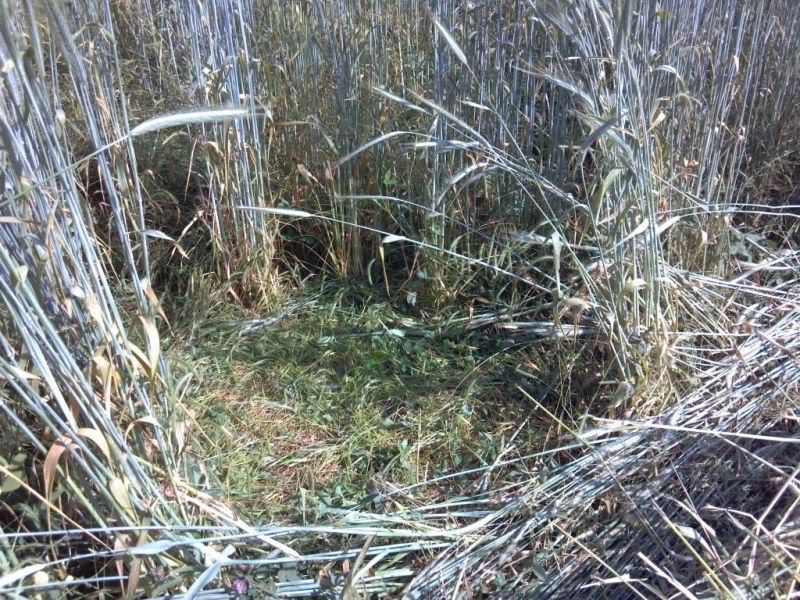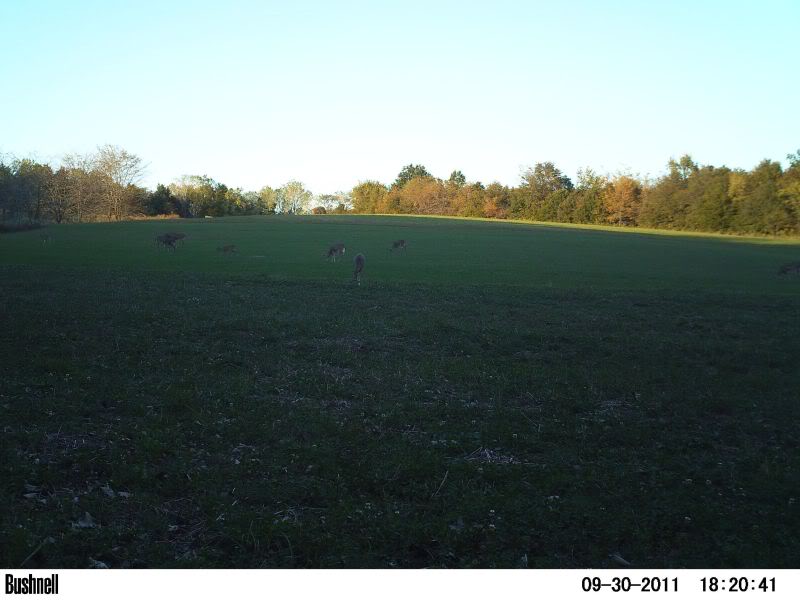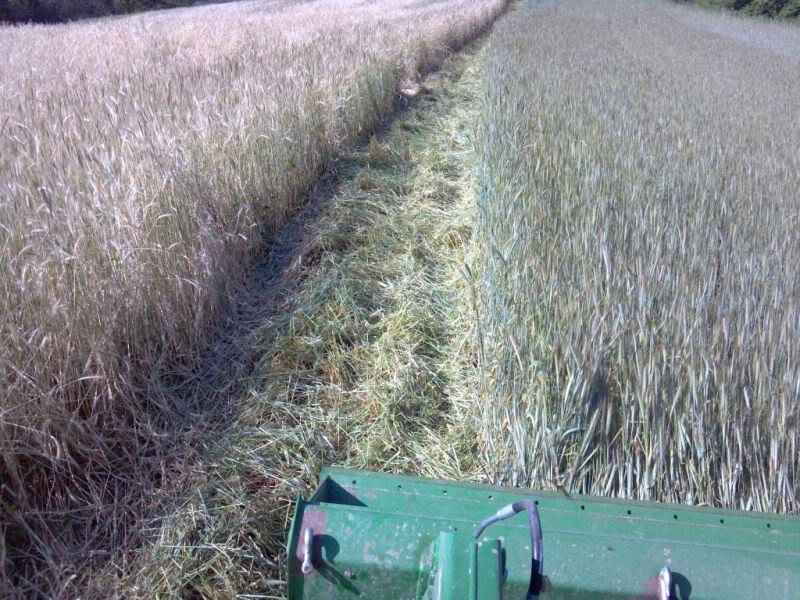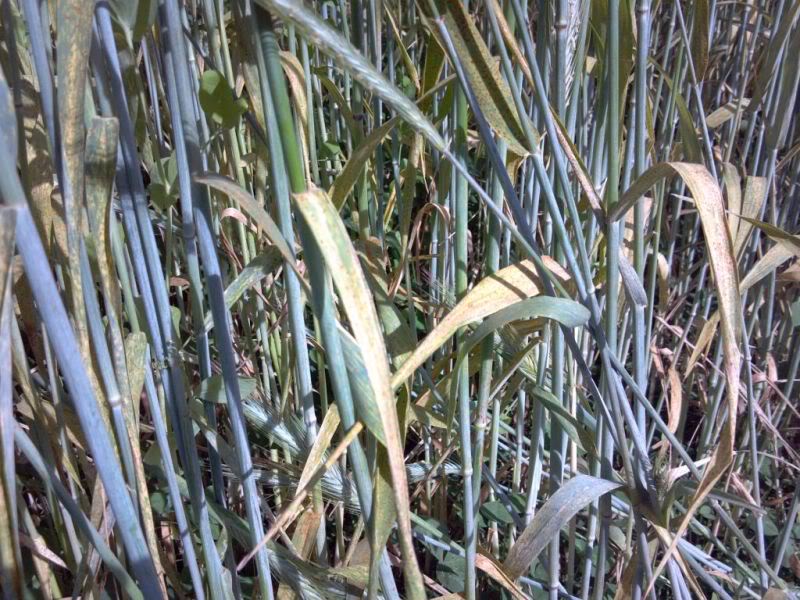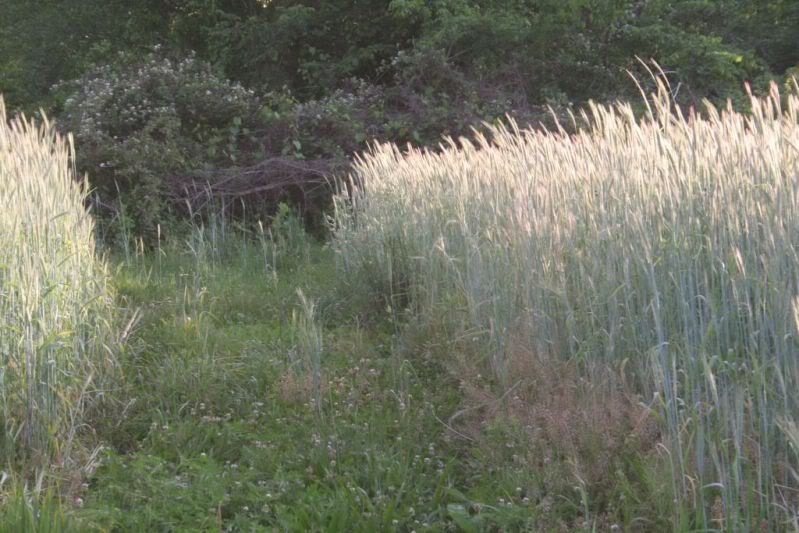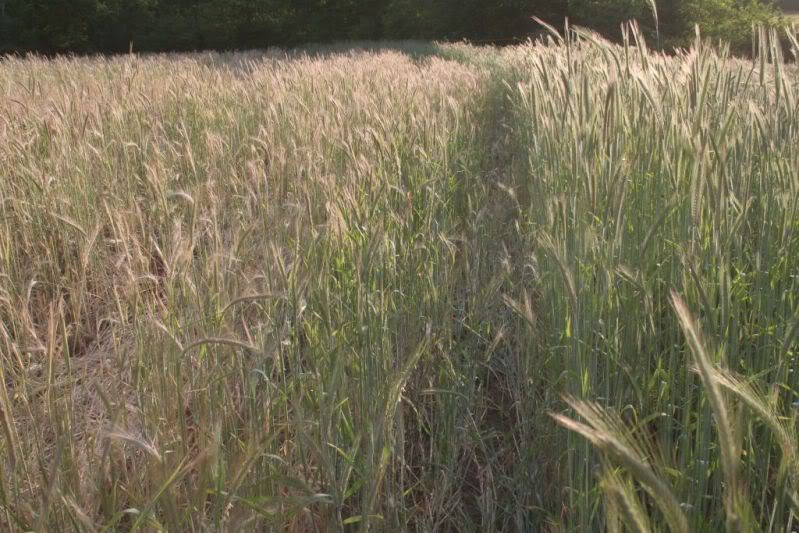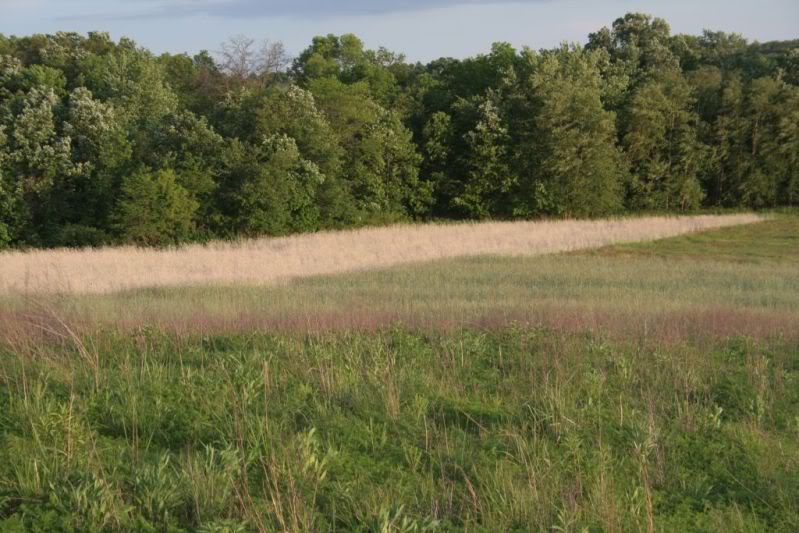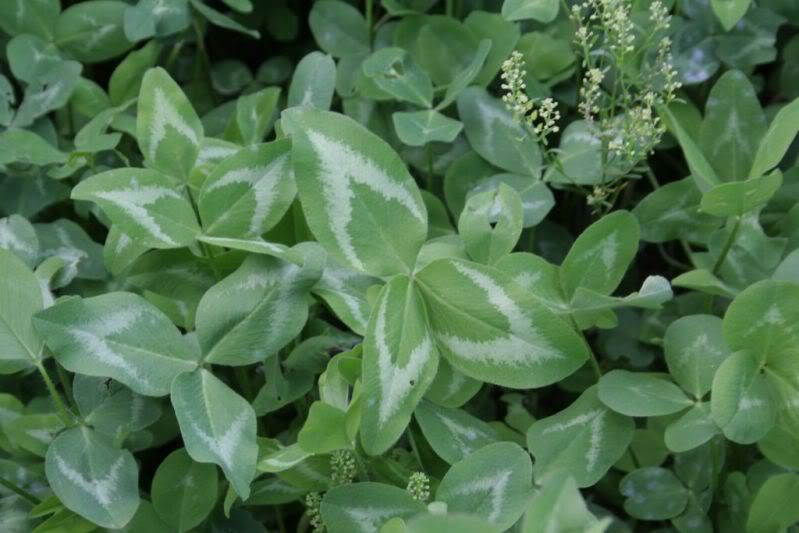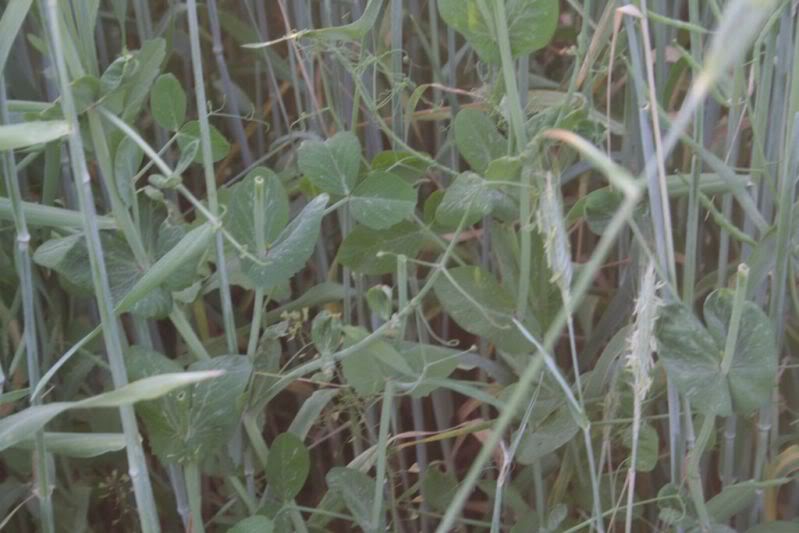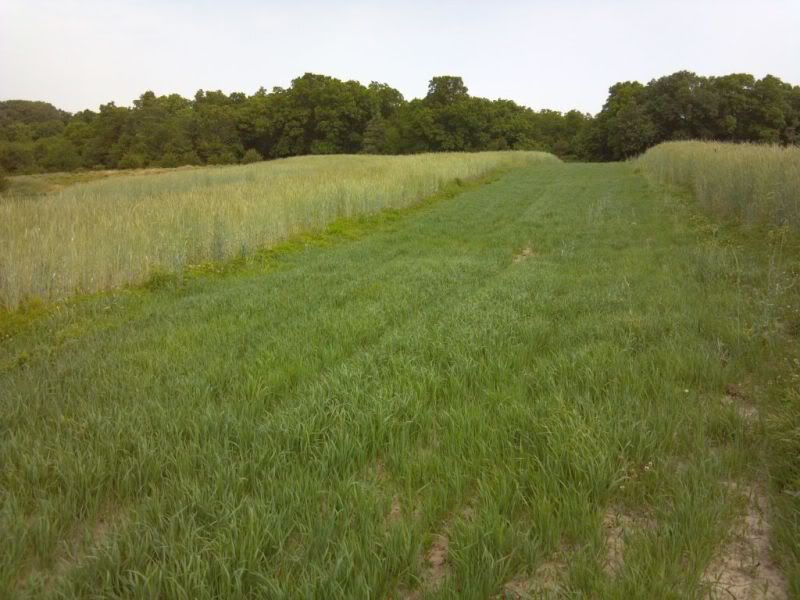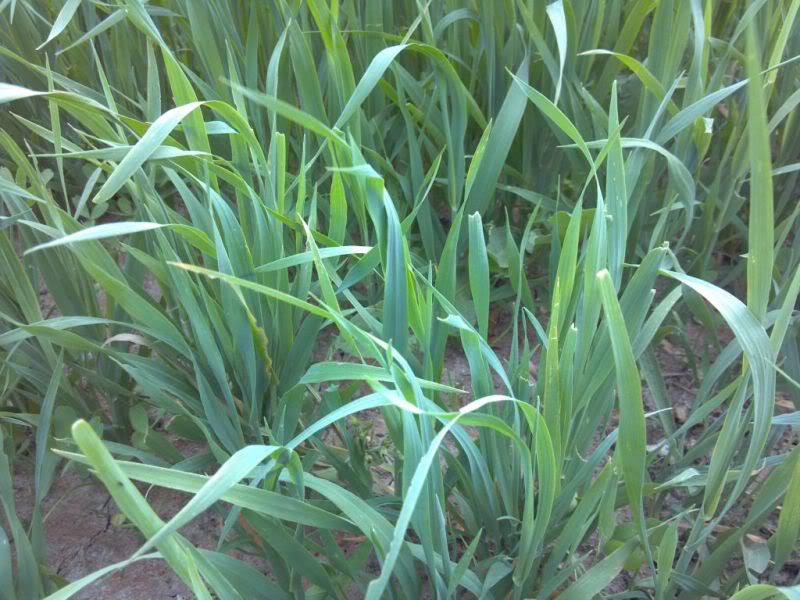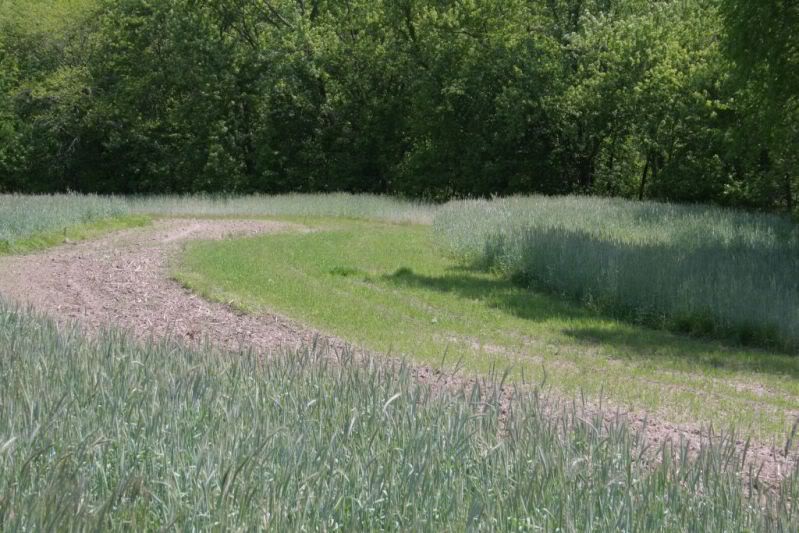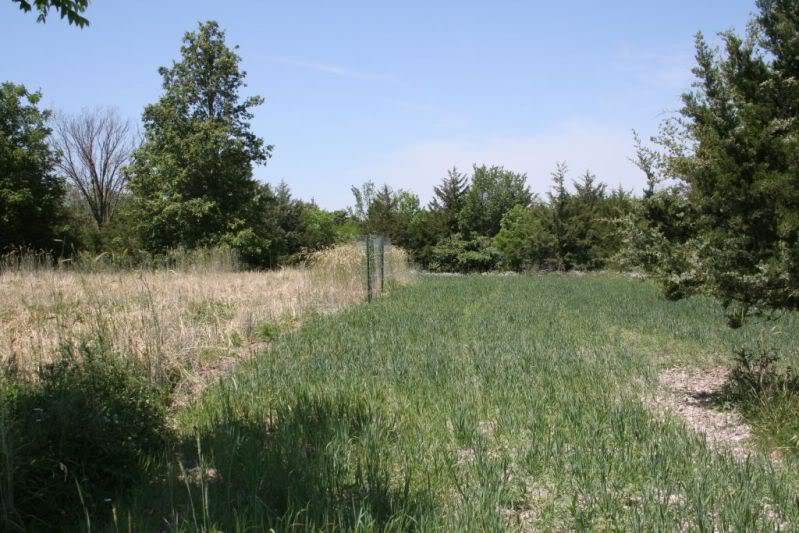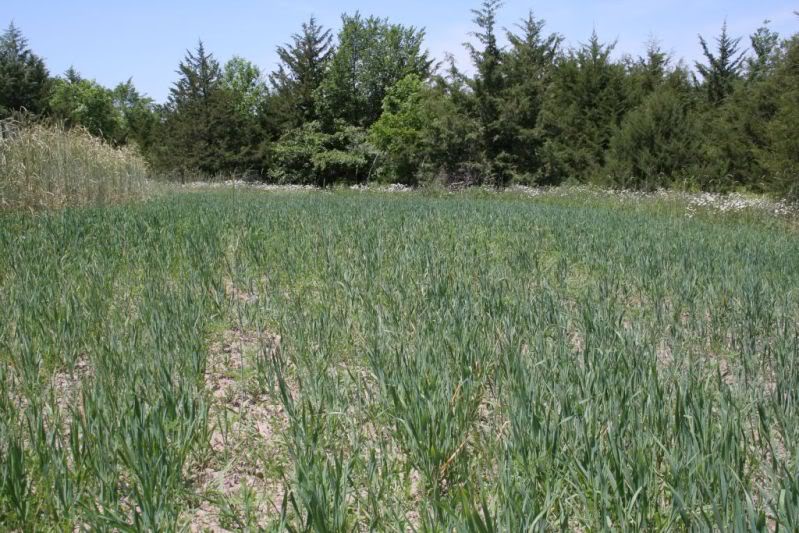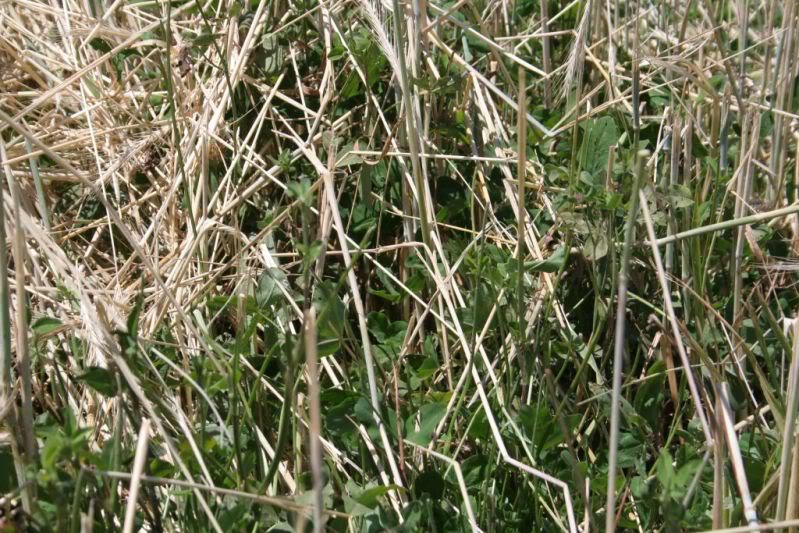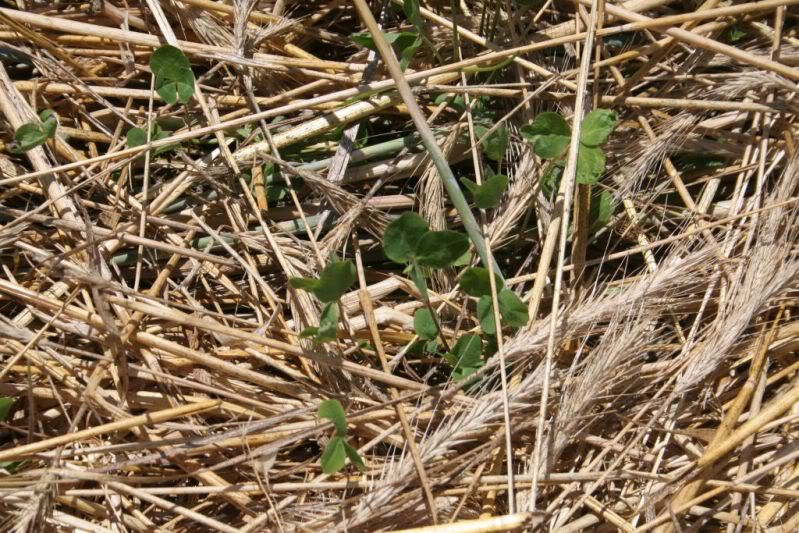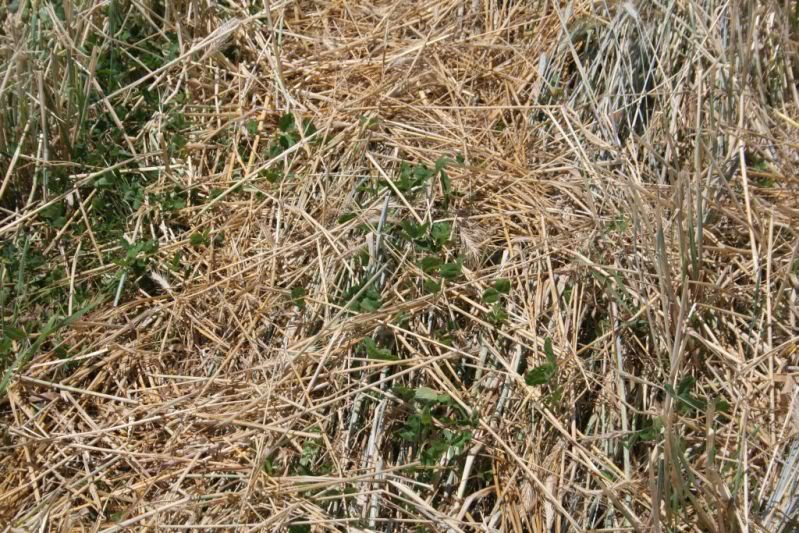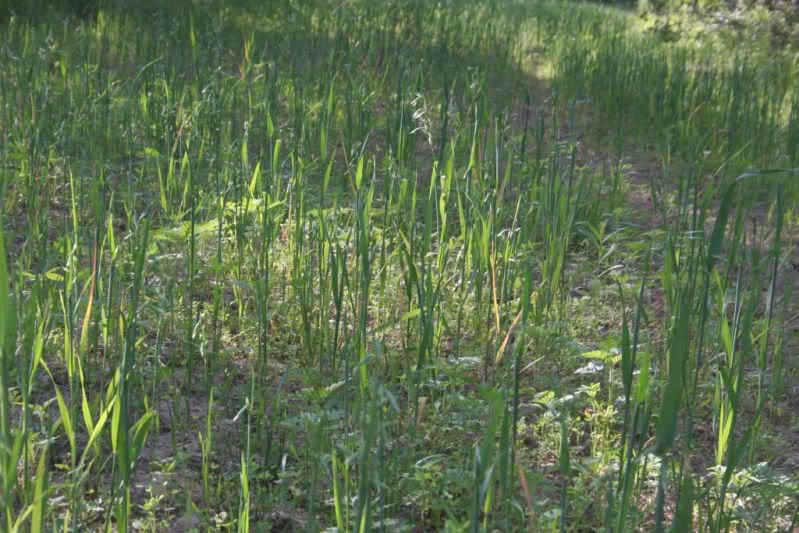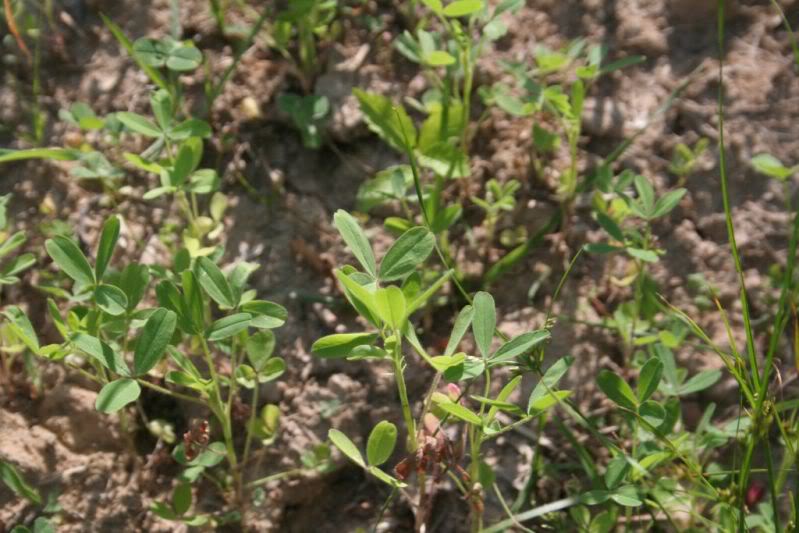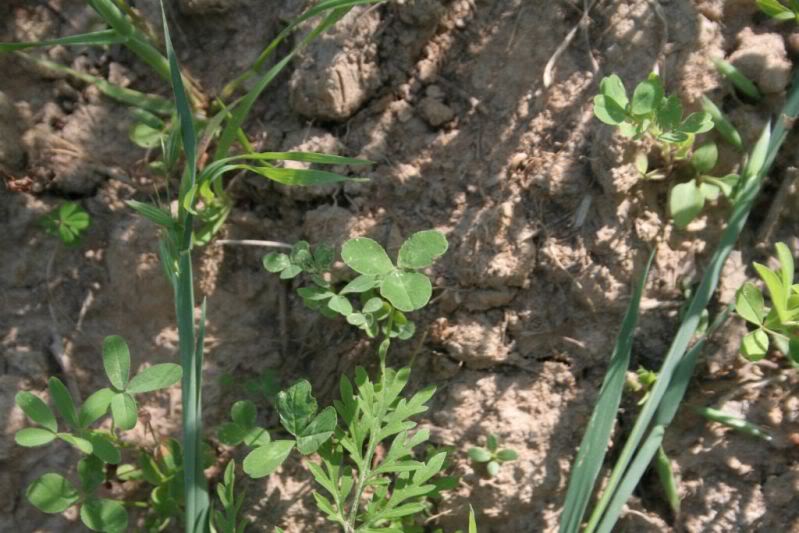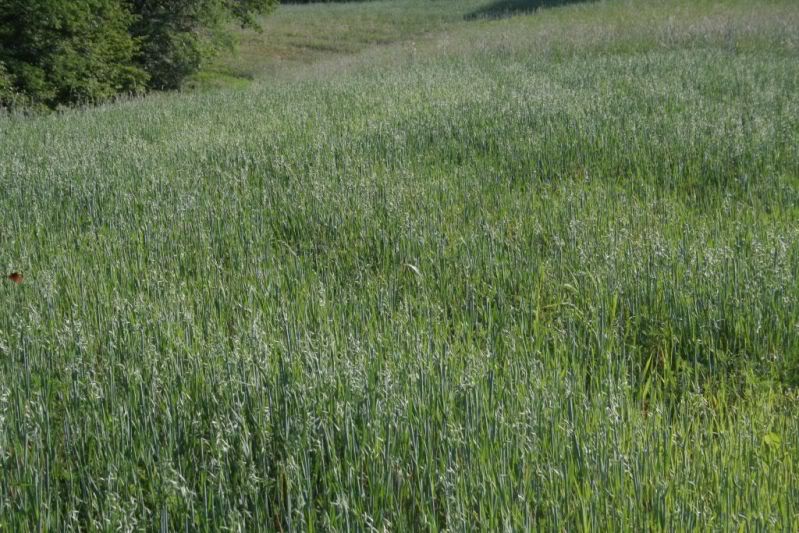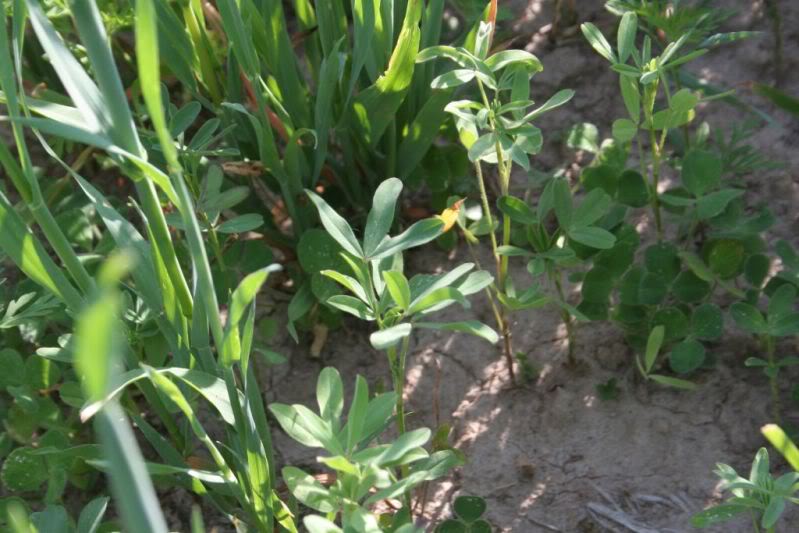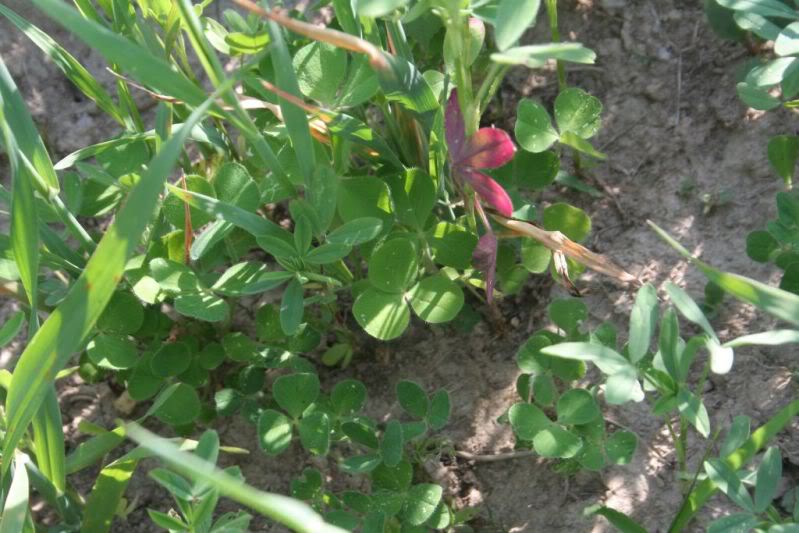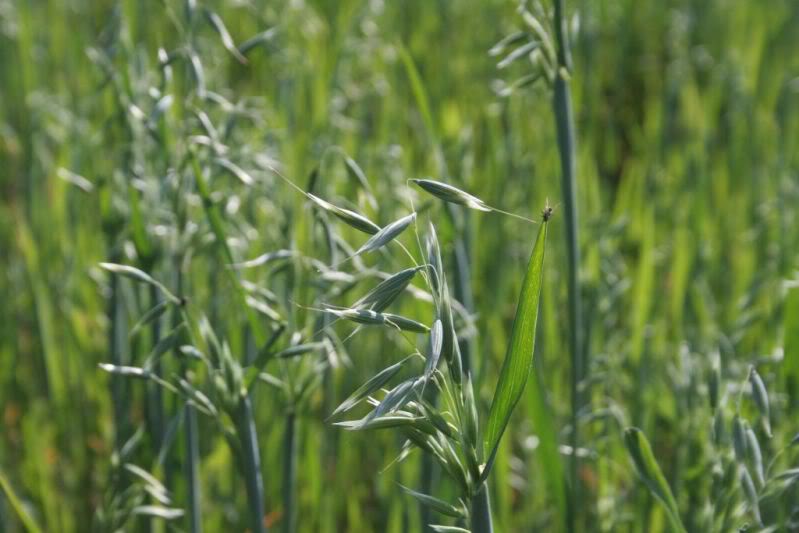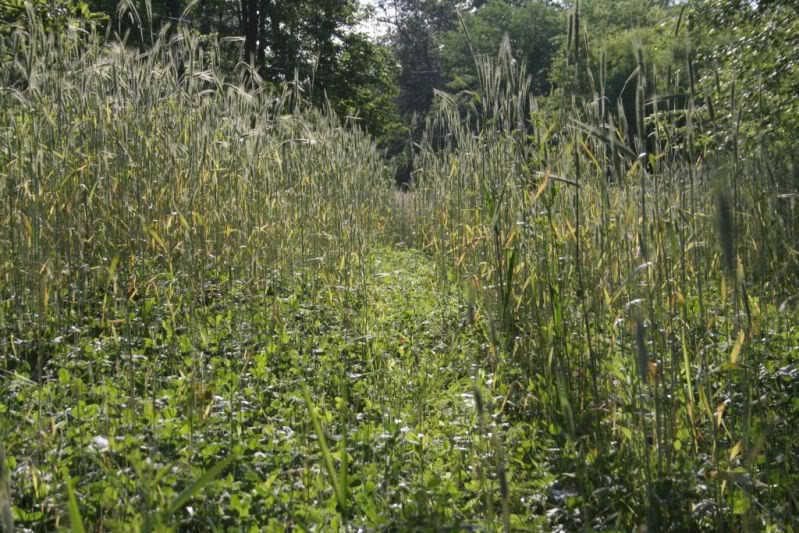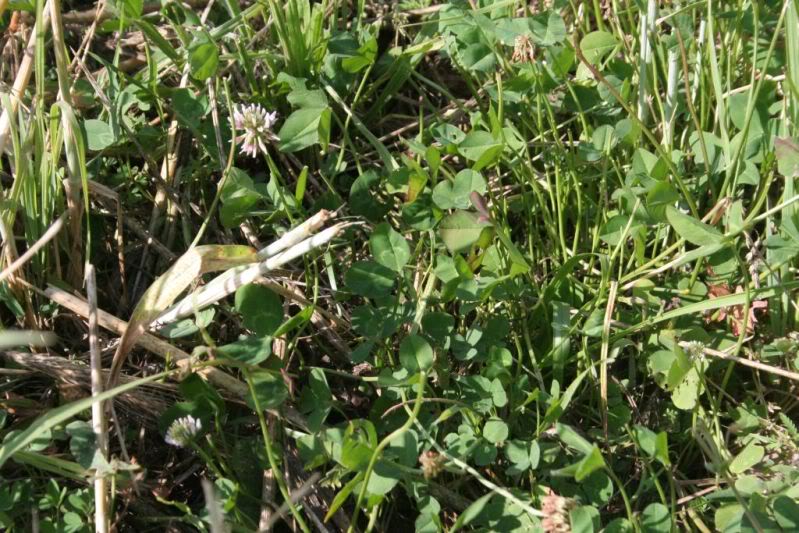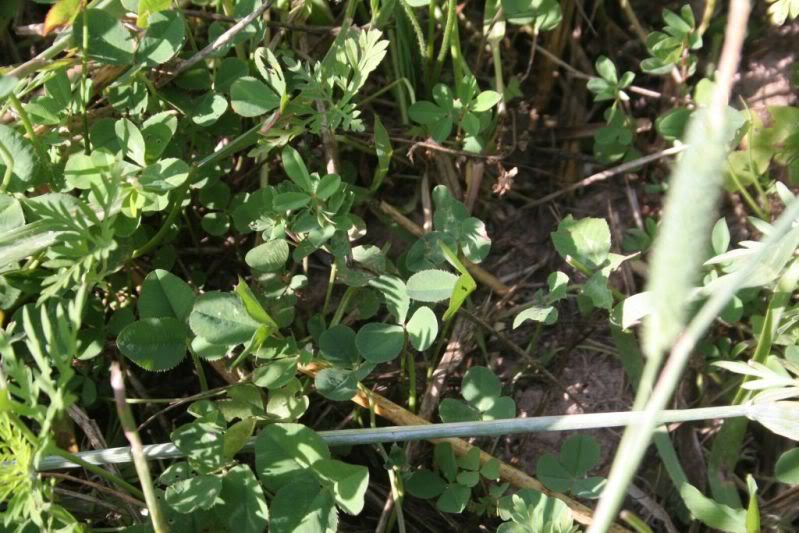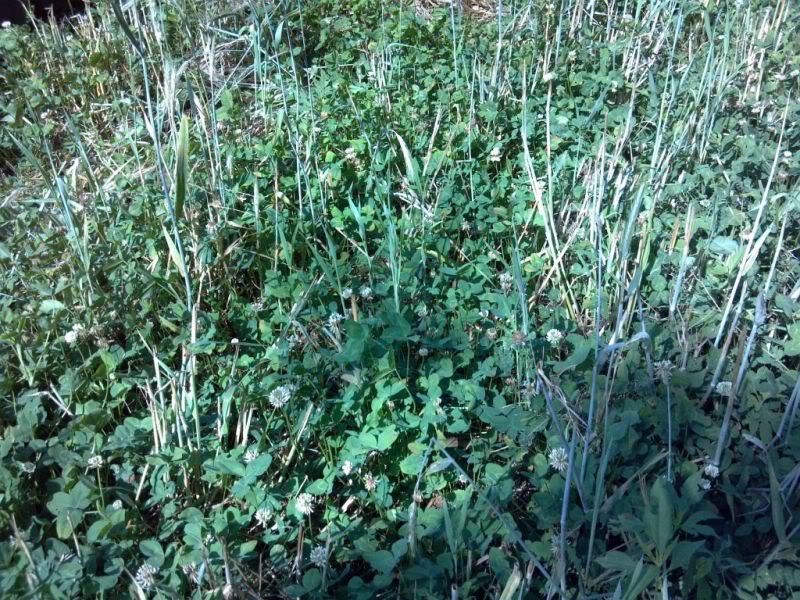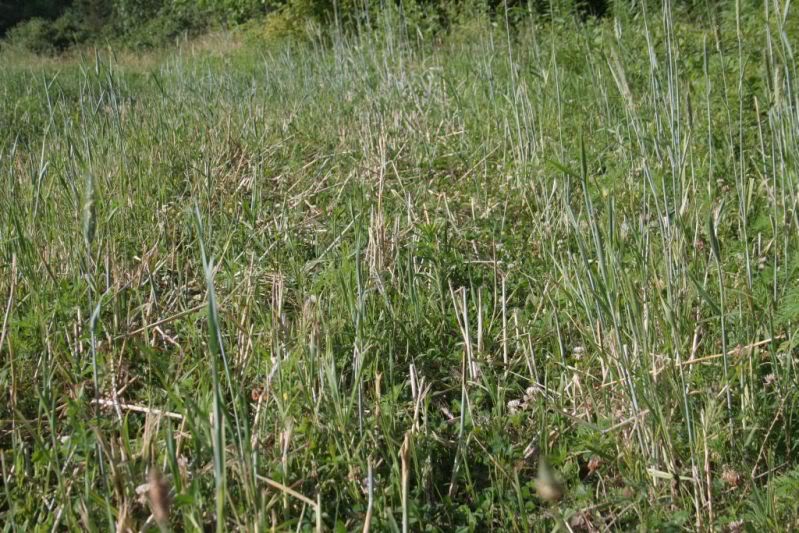dbltree
Super Moderator
May 24th, 2012
I love no-tilling into standing winter rye and have no-tilled plenty of corn and soybeans into rye...perfect setup all the way around! Rye feeds deer all winter and builds up organic matter, scavenges nitrogen, pulls up sub soil nutrients and then....easily killed in the spring and just plant right into it!
I no longer plant either soybeans or corn finding the clover/brassica/cereal grain crops to be more effective and less costly so I no-tilled oats and annual clovers into standing rye that I had overseeded into soybeans in early September last year.
The Great Plains/Land Pride drill easily sliced thru the rye (previously killed with gly)
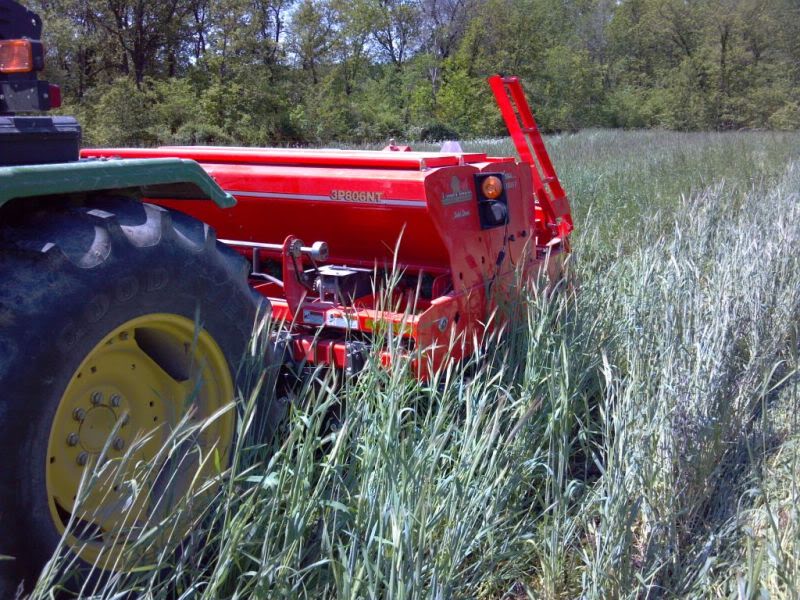
and despite not a crop of rain since planting, both oats and the berseem/crimson clovers are coming up nicely!
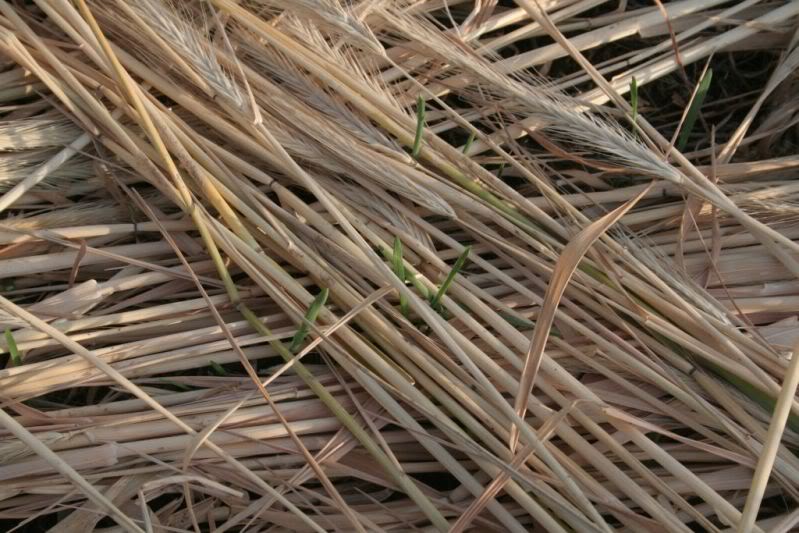
I ran a field cultivator thru one strip to have a comparison

but planting into the killed rye leaves an outstanding mulch of straw that conserves soil moisture

Tiny seedlings...

germinate and are protected from the heat and drying winds
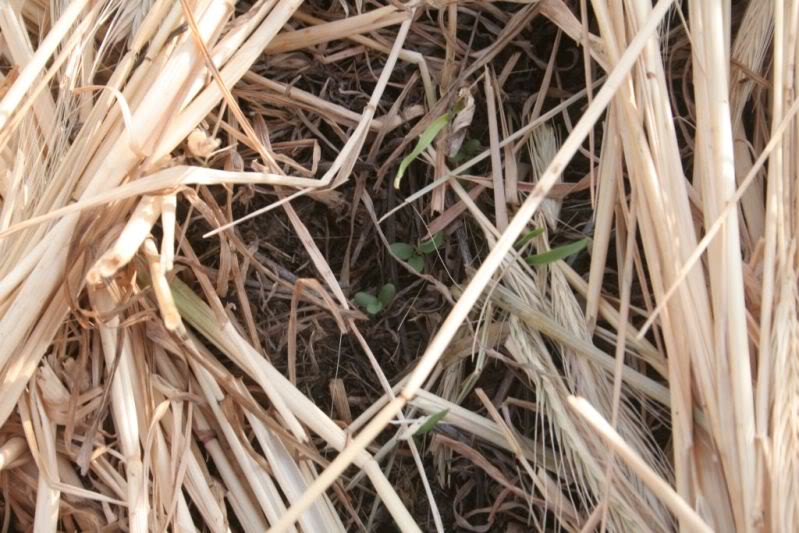
The killed rye is still standing but sunlight can reach the oats and clover
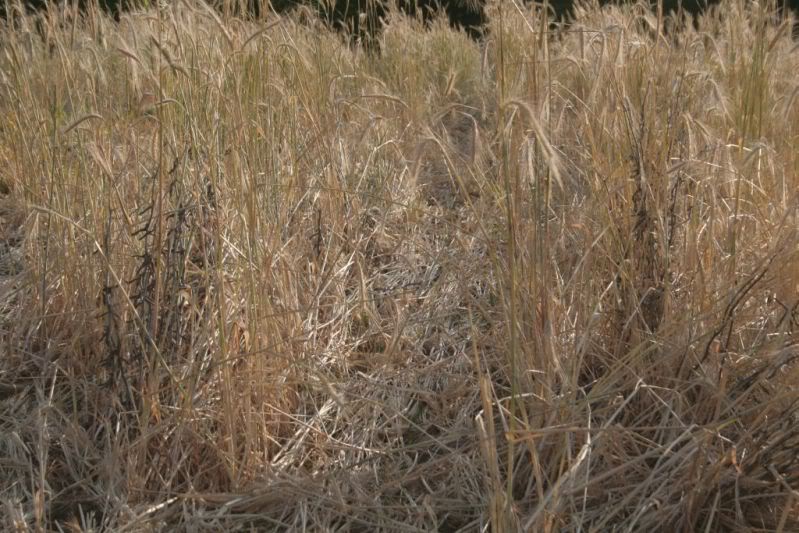
wherever and whenever it is not necessary to add nitrogen in the form of urea (which must be incorporated via tillage or rain) no-tilling is a far better option for our soils

The oats an annual clovers are just temporary cover crops that will provide a summer food source and help build organic matter and nitrogen for the next crops which in this case will be 1/2 the plot in brassicas in mid July and 1/2 in the rye combination in late August....with no rain in sight, we'll see how they do?

I love no-tilling into standing winter rye and have no-tilled plenty of corn and soybeans into rye...perfect setup all the way around! Rye feeds deer all winter and builds up organic matter, scavenges nitrogen, pulls up sub soil nutrients and then....easily killed in the spring and just plant right into it!
I no longer plant either soybeans or corn finding the clover/brassica/cereal grain crops to be more effective and less costly so I no-tilled oats and annual clovers into standing rye that I had overseeded into soybeans in early September last year.
The Great Plains/Land Pride drill easily sliced thru the rye (previously killed with gly)

and despite not a crop of rain since planting, both oats and the berseem/crimson clovers are coming up nicely!

I ran a field cultivator thru one strip to have a comparison

but planting into the killed rye leaves an outstanding mulch of straw that conserves soil moisture

Tiny seedlings...

germinate and are protected from the heat and drying winds

The killed rye is still standing but sunlight can reach the oats and clover

wherever and whenever it is not necessary to add nitrogen in the form of urea (which must be incorporated via tillage or rain) no-tilling is a far better option for our soils

The oats an annual clovers are just temporary cover crops that will provide a summer food source and help build organic matter and nitrogen for the next crops which in this case will be 1/2 the plot in brassicas in mid July and 1/2 in the rye combination in late August....with no rain in sight, we'll see how they do?





